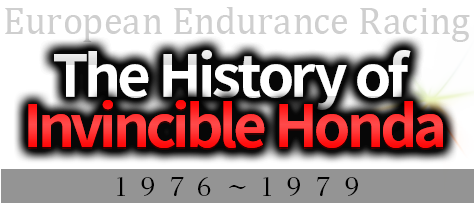Honda Endurance Racing and F.C.C. TSR Honda are participating in the 2016/2017 FIM Endurance World Championship (EWC) series with Honda CBR1000RR bikes. The series stages a total of 6 races, ending with the Suzuka 8hours FIM EWC. The European Endurance Championship series is the predecessor to the FIM EWC series. In the 1970’s, Honda won both the riders and the constructors titles for four consecutive years. The team was so strong, it was known as “the invincible.”
 Honda’s Limitless Passion Leads Endurance Machines into New Era
Honda’s Limitless Passion Leads Endurance Machines into New Era
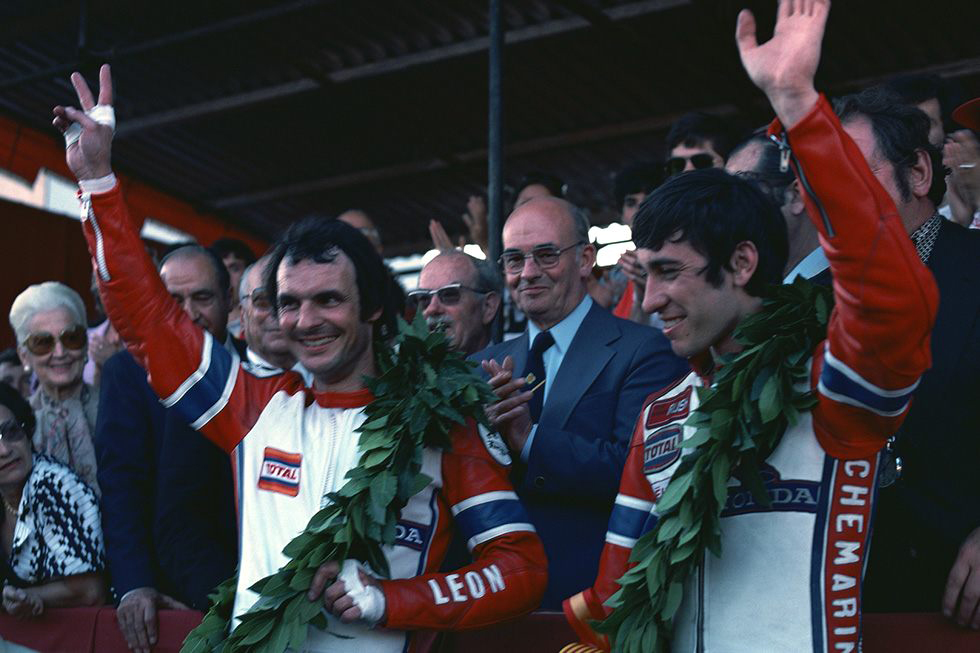
Christian Leon (left), Jean-Claude Chemarin (right) (1978 Montjuic 24 hours)
In 1978, Honda was in its third year of challenging the European Endurance Championship. Honda continued to support the local affiliates and dealer teams with strengthened components verified by the factory team, and had transferred management of the factory team to local staff. Michihiko Aika said "The advantage of supporting local teams is that the local teams become popular and attract attention," which he considered to be most important. For the European spectators it was most exciting to see the local teams win races, and if that was achieved with factory-supplied engines, even more fans would be attracted to the races. As a result, not only did Honda race fans increase, but overall Honda fans as well. The sight of local teams winning races had improved the Honda brand.
The RCB1000s had marked a milestone by using new DOHC models as the base machine for tuning. The CB750FOUR (SOHC)-based 481 had been further refined as well, but the new 482 with a new crank case had been developed, based on the newly arriving production CB750K/CB900F/CB750F models planned to be released in 1979.
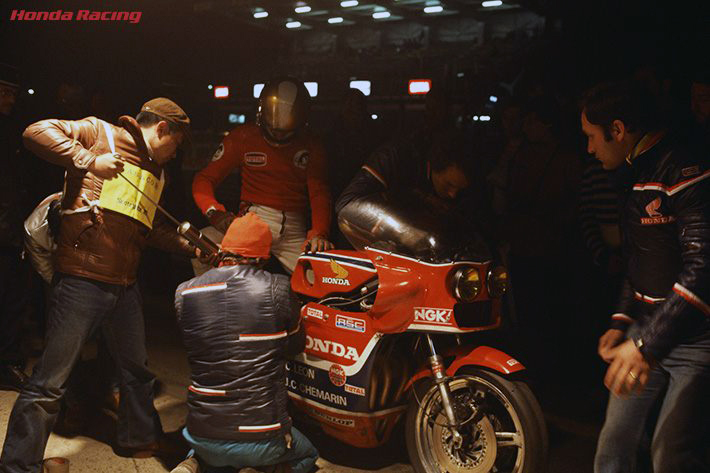
Jean-Claude Chemarin / RCB1000
(1978 Le Mans 1000km)
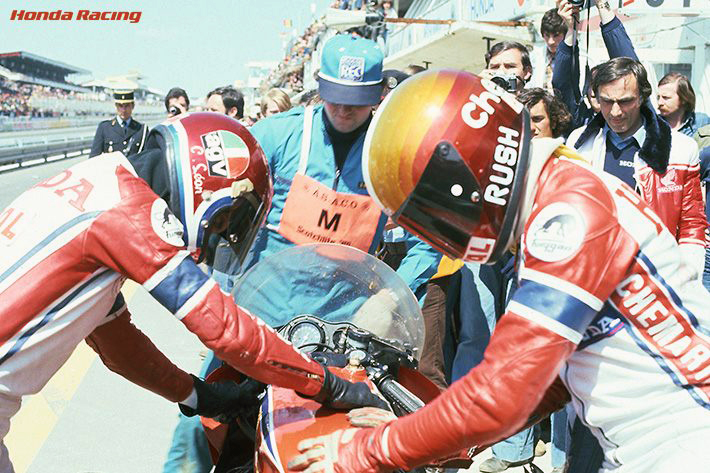
Christian Leon, Jean-Claude Chemarin / RCB1000
(1978 Le Mans 1000km)
The 482 engine, a second generation RCB1000 powerplant, had modifications such as the spark unit being moved from behind the cylinders to the left side of the engine, and the oil tank spout also moved to the left. The dry clutch was another new feature, compared to the wet clutch of the 481 models. An electric starter was added to make starting and recovering from a crash easier. Bore, stroke and other dimensions of the cylinder block were unchanged from the 481, but by changing the valve timing and compression ratio, output had increased to 130ps/9500rpm. For comparison, some sprint bikes, designed to race less than 1000km, had a smaller ACG generator, resulting in an output of 135ps/10000rpm.
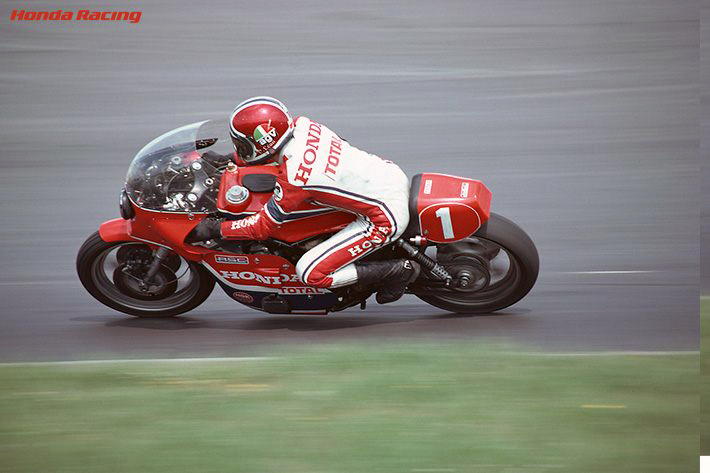
Christian Leon / RCB1000
(1978 Nurburgring 8 hours)
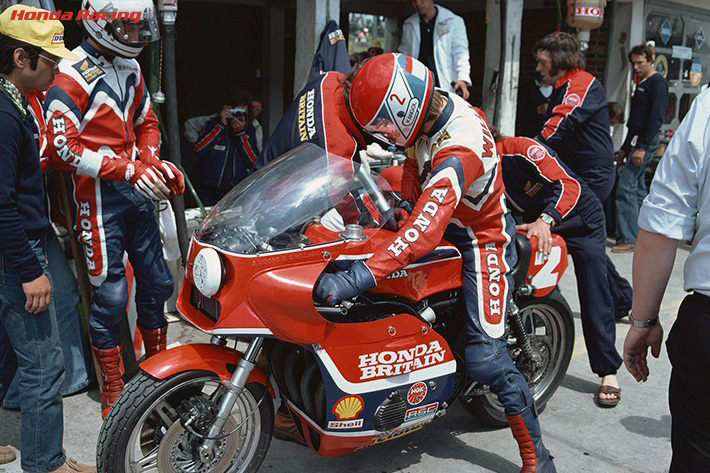
Charlie Williams / RCB1000
(1978 Nurburgring 8 hours)
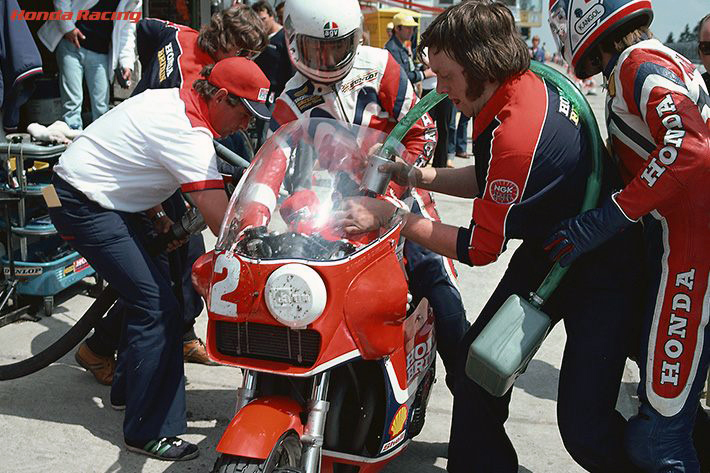
Gary Green (left), Charlie Williams (right) / RCB1000
(1978 Nurburgring 8 hours)
To match the high-powered engine, the chassis had been modified by moving the oil cooler mounted under the steering head, from under the head lights where it was the previous year. The framework itself was largely unchanged, but the cowling had been modified for more efficient air flow. Another unique feature on some models was the CBS (Combined Brake System). This allowed both front and rear brakes to work in unison when either was used - a system installed to reduce the rider’s burden.
The 1978 season started with the non-title Le Mans 24 hours, which Honda participated on 481 machines from the previous year. Christian Leon/Jean-Claude Chemarin won this race. At the following Zandvoort 600, another non-title event, Honda raced the 482, Leon/Chemarin riding. The race was won by Stan Woods/Charlie Williams on a 481, with Leon/Chemarin finishing 5th some 8 laps behind, having suffered a clutch problem. The 482 engine was not used to compete in the following races, until the sixth race at Montjuic. Using both 481 and 482 chassis combined with 481 engines, the teams raced the first round of the European Endurance Championship, the Liege 24 hours. While Leon/Chemarin retired with engine problems, Holland's Dholda Honda with Jacques Luc/Jack Buytaert won the race, but 2nd to 5th places were Kawasakis, threatening Honda’s winning streak. At Round 4, the Misano 1000km, and Round 8, the Nurburgring 8 hours, Leon/Chemarin were victorious, and the other Honda teams’s fighting spirits were up again.
In the sixth race, Round 4 of the European Endurance Championship, Honda finally raced the new 482A, a refined version of the 482. Riding the new machine, Leon/Chemarin won the race 8 laps ahead of Woods/Williams. Luc/Buytaert of Dholda Honda came in 3rd and completed the podium clean sweep for Honda. A Ducati (Benjamin Grau/Victor Palomo) had hit Chemarin from behind while leading the race, but luckily damages were minor, and he rejoined the race in 5th position after 10 minutes of repairs. Chemarin completed the race with a breathtaking record of 763 laps (2892.27km), even after losing his cowling due to the crash.
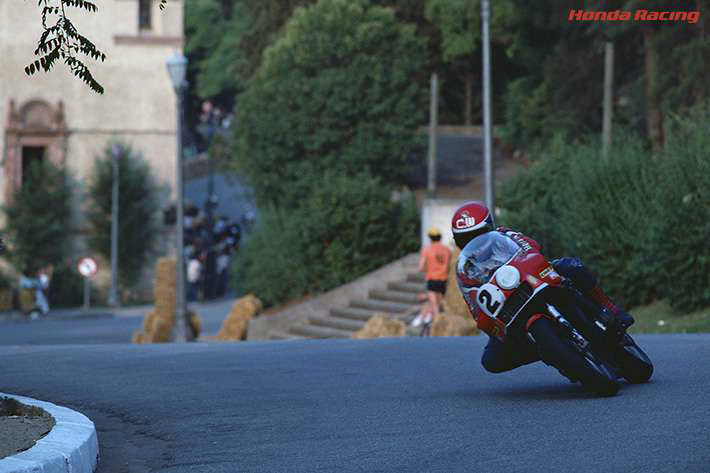
Charlie Williams / RCB1000
(1978 Montjuic 24 hours)
The 482 had not been used until this race, as although reliability had improved by shifting to the CB750K/CB900F/CB750F-based engine, Honda wanted to refine it further to ensure its competitiveness. Aika recalled the problems: "When using the CB750FOUR engine bored-out to around 1000cc, the integrity of the cylinder itself was at great risk. When boring the original 64mm cylinder out to 68mm the pitch between the cylinders was 5 mm. This was already close, but when we bored it out to 70mm, the pitch was only 3mm. This was when we had to face serious problems. By using the new CB900F-based engine, we were able to bore out the cylinders without taking risks we had with the 481." The new base engine was metal mold-casted, similar to the production models, where as the 481s were sand mold-casted. This change improved reliability while reducing weight.
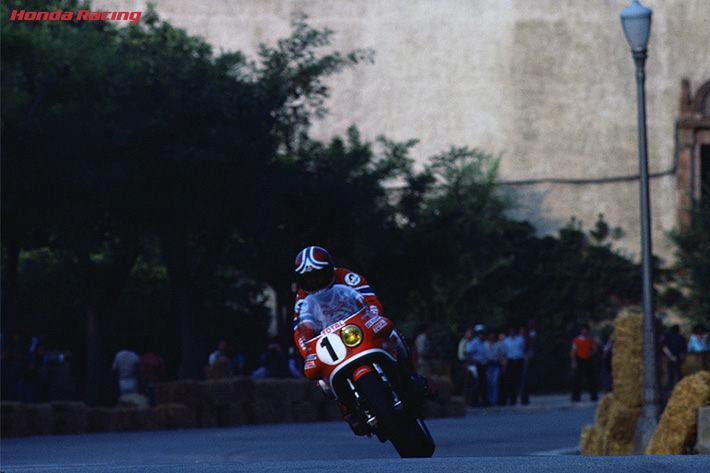
Christian Leon / RCB1000
(1978 Montjuic 24 hours)
Despite benefits of the metal mold-cast engine, the team now had to wait to build their machines until casts were made and manufacturing of the production models began. "We could not wait until the new models were actually manufactured, so we started development alongside with the production model team. But still, without the actual parts planned to be in the production model, we could not build the engine or do any testing. All we needed was the crankcase, the cylinder and the cylinder head, but it took time, and I remember being very impatient waiting for the parts to arrive," recalled Aika.
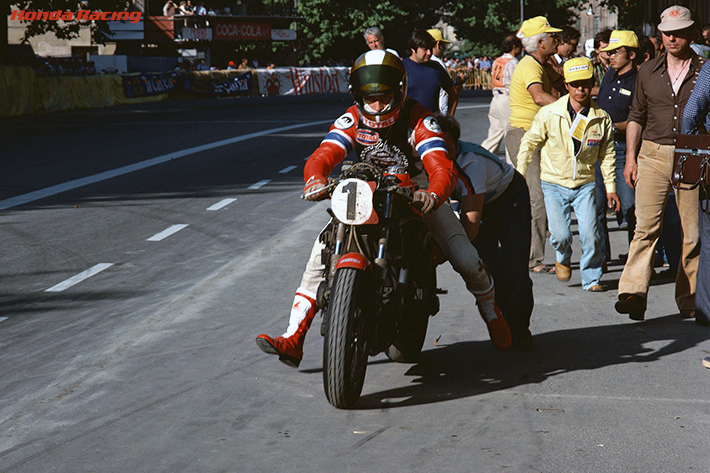
Jean-Claude Chemarin / RCB1000
(1978 Montjuic 24 hours)
Honda’s testing standards demanded more than 10 hours straight on the bench tester, flat out, and zero-defects on inspection of the components disassembled afterwards. Only engines that passed this test were sent to Europe, and at the Montjuic 24 hours, the grueling standards paid off, as the 482 was indeed reliable.
